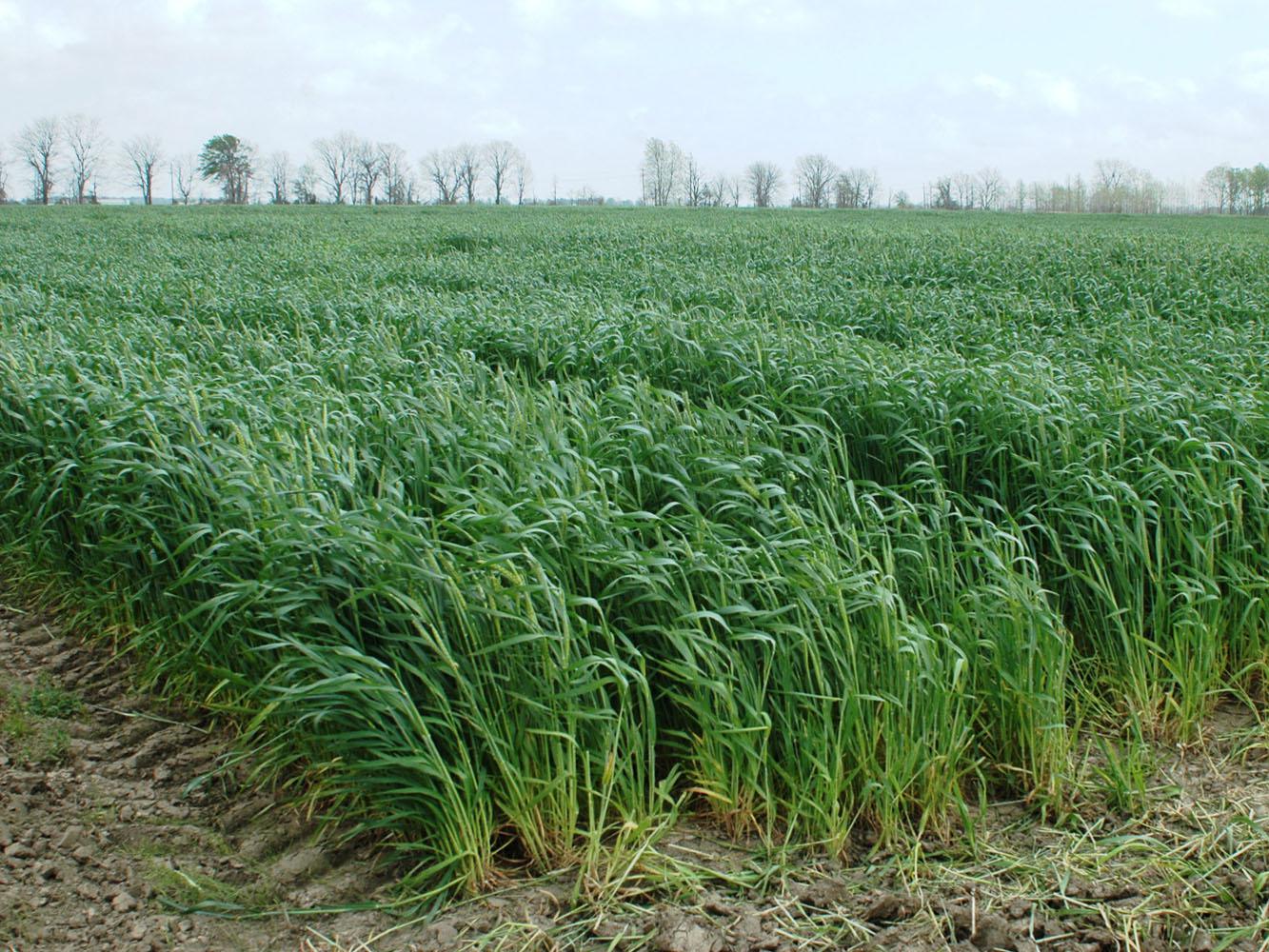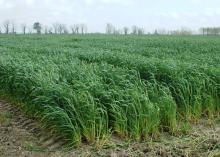Information Possibly Outdated
The information presented on this page was originally released on March 23, 2012. It may not be outdated, but please search our site for more current information. If you plan to quote or reference this information in a publication, please check with the Extension specialist or author before proceeding.
Warm winter and rain challenge wheat crop
MISSISSIPPI STATE -- A winter that quit before it got started challenged the state’s wheat crop, resulting in a below-average crop as it enters the homestretch.
Erick Larson, grain crops agronomist with the Mississippi State University Extension Service, said warm winter temperatures pushed the crop’s development ahead of schedule. Harvest could begin a few weeks early, in mid-May.
“A lot of wheat’s yield potential will be determined by weather conditions between now and May,” Larson said. “The early heading date could give wheat a longer grain-filling period, which could be a slight advantage, if we don’t have a freeze. Drier conditions and moderate temperatures will promote better yield.”
Wheat is said to be heading when the grain heads emerge and the plant begins to produce kernels. Larson said he expects the crop to be about 50 percent headed by the end of March. Typically, the crop is less than 25 percent headed by the first week of April.
“A frost would be very dangerous now because wheat is most vulnerable when it is at the heading stage,” Larson said. “Because of the warm weather beginning in January, the crop is about three weeks ahead of schedule.”
Larson said the unusual winter weather that prompted early vegetative growth of the wheat caused management problems for growers.
“Producers had serious issues with proper nitrogen timing, and the fairly wet winter further complicated those problems,” Larson said. “Growers sometimes try to delay nitrogen application and end up putting it out later than they should.”
Growers must always manage pests, and they had some increased problems this year with a disease called stripe rust.
“This disease thrives in cooler conditions, and it showed up a lot earlier than normal,” Larson said. “Growers need to scout for and potentially manage this disease earlier than they manage most of the other wheat diseases.”
Much of the state’s wheat is double-cropped with late-planted soybeans, which means one crop is grown over the winter and a second, late-planted crop goes on the same ground after harvest. The unseasonably warm winter may indirectly enhance the productivity of double-cropped land.
“Wheat is not typically harvested until the last week of May and first week of June, but we should have the opportunity to harvest it a little earlier than usual this year,” Larson said. “The earlier we plant our summer crops, generally the more productive they are.”
Preston Aust, Humphreys County Extension director, said double-cropping wheat is risky without an irrigation system.
“You’re possibly throwing your money out the window because it’s hard to get beans out of the ground behind wheat unless you have sprinkler irrigation to get them up,” Aust said.
The wheat crop nationally and in Mississippi is up from recent years. Mississippi growers planted 360,000 acres of wheat for 2011 harvest, and the U.S. Department of Agriculture predicts state wheat acreage at 500,000 this year.
Aust said the about 6,000 acres of wheat in his county look about average and need drier conditions to finish well.
John Michael Riley, Extension agricultural economist, said wheat prices on July futures contracts are around $6.45 a bushel.
“That is lower than last year when prices were at $8 a bushel at this same time, but better than prices in 2009 and 2010,” Riley said.
The cash prices for wheat delivery now at Greenville elevators is $6.38 a bushel, and $6.42 for the upcoming harvest.
“Prices have been pretty choppy since the start of 2012,” Riley said. “Global supplies appear to be rebounding despite a U.S. shortfall due to the massive drought that gripped the southwestern United States, which is a large wheat-growing area. Corn prices have fallen off their highs of a few months ago, and that has lessened demand for wheat as a feed substitute.”







